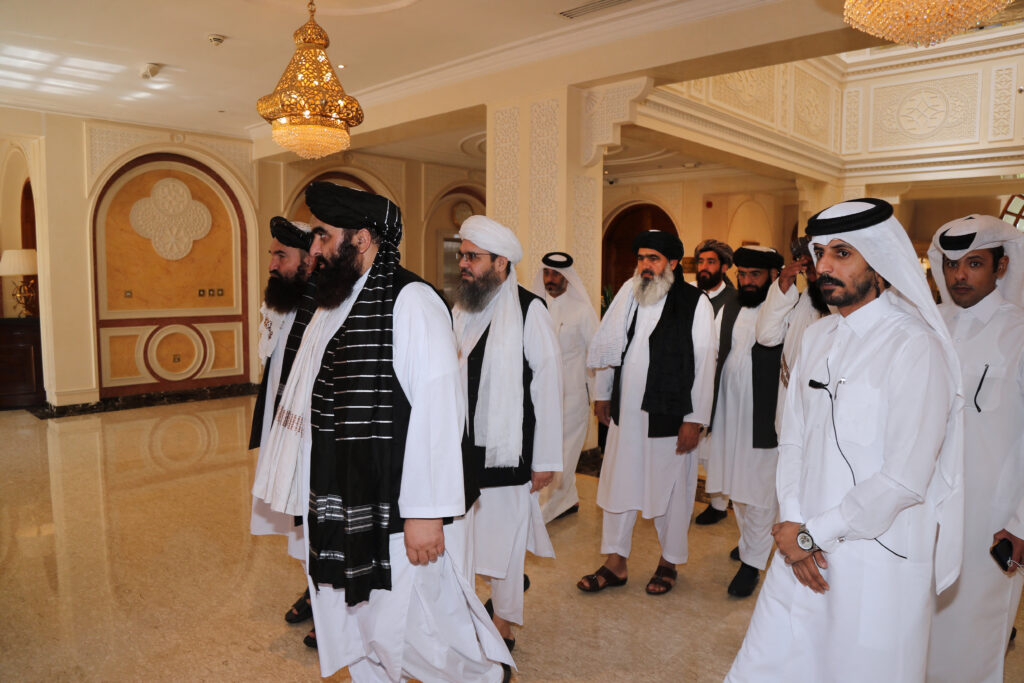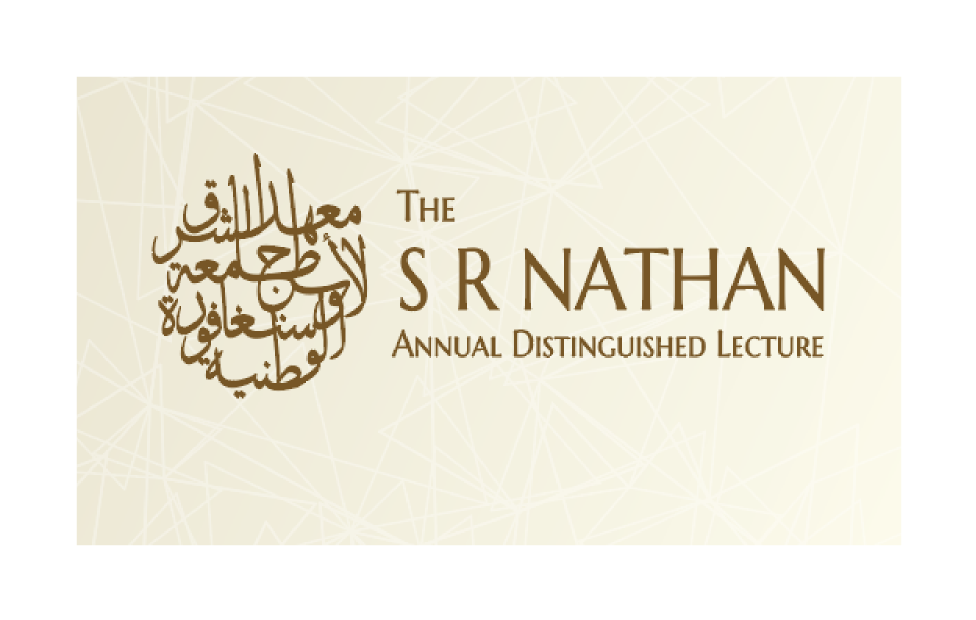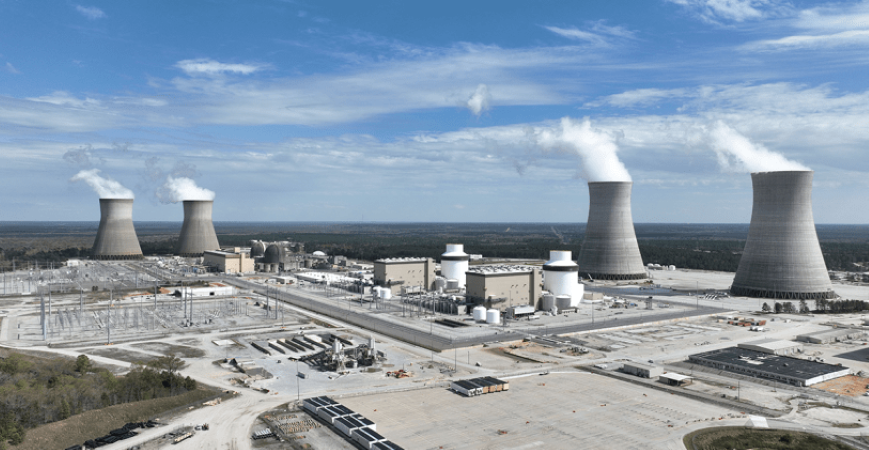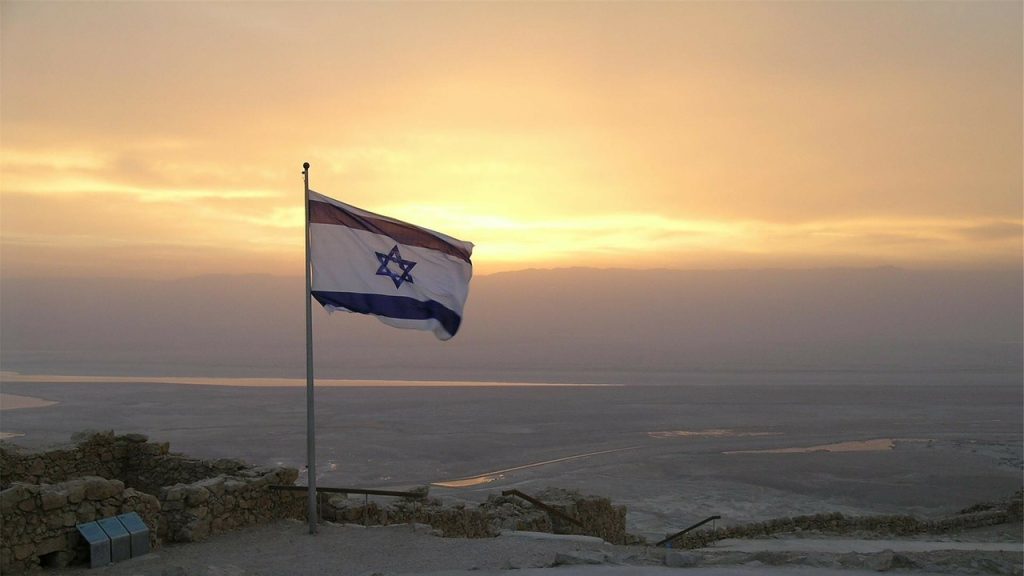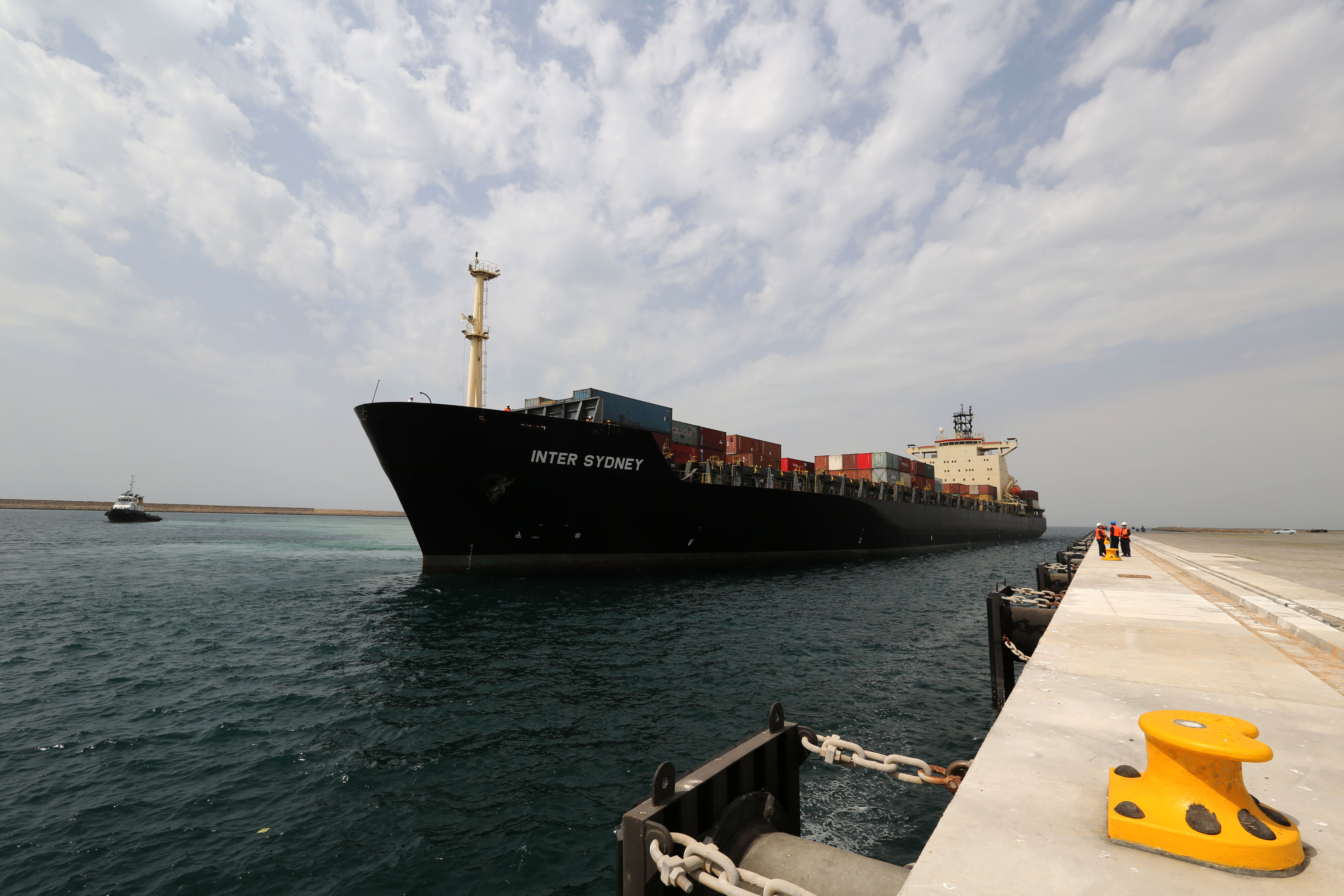
- 09 Jun 2021
Beyond the Chokepoints: New Geopolitics of Arabian Seaports
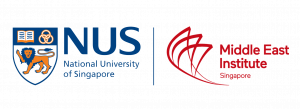 |
This event is jointly organised by the Institute of South Asian Studies (ISAS) & the Middle East Institute (MEI) at the National University of Singapore.
About the Panel Discussion
Around one-sixth of the global oil supply moves through the Strait of Hormuz, making this chokepoint perhaps the most crucial 21 miles in the world. Any minor disturbance or turmoil in these narrow waters can create ripples strong enough to rock the global economy. The US and its North Atlantic Treaty Organisation allies have long-held open and safe passage through the strait as their primary Middle East foreign policy goal. To secure these 21 miles, they built military bases all around the Gulf, stationed one of the largest floating bases with the Fifth Fleet in Bahrain and struck alliances with Arab monarchs to lay the foundation of the region’s political dynamics. However, several recent infrastructural developments immediately to the east are set to move us beyond this chokepoint politics. Oman, Pakistan, and Iran — otherwise minor players in the oil game — have built, with the help of sizeable foreign investments, thoroughly modern ports in Duqm, Gwadar and Chahbahar. While unique in their own way, each of these ports shares the same advantage over the current leading ports in the region — they circumvent the strait to open into the Arabian Sea, which is much more difficult to obstruct.
This panel discussion will explore the broader implications of this possible shift by analysing the following:
- What will a region built around channelling traffic through the Arabian Sea, instead of protecting the Strait of Hormuz, look like?
- Are the oil-producing Gulf states going to support these projects to reduce vulnerabilities to oil flows? Can we see a more earnest Iran at the negotiation table if it can no longer play the blockade card?
- Will this finally allow the US to further cut back on boots on the ground in the Middle East?
- How will China regulate traffic between its open-sea ports in Oman and Pakistan?
- Will these ports maintain exclusivity or will they connect and share traffic with the Indian-backed Chahbahar port in Iran?
- Will India expand its security cooperation with the US to cover the Arabian Peninsula or pursue its own autonomous regional strategy towards Iran and other regional actors?
- How will the involved states balance between collaborating for nurturing the corridor and competing for traffic through various economic, political, and security enticements?
This public talk will be conducted online via Zoom on Wednesday, 9 June 2021, from 3.00pm to 4.30pm (Singapore Time). All are welcome to participate. This event is free, however, registration is compulsory. Successful registrants will receive a confirmation email with the Zoom details closer to the date of the event.
This event is free, however, registration is compulsory. For the latest event programme, please click here.
Image caption: A cargo ship sails through the Shahid Beheshti Port in the southeastern Iranian coastal city of Chabahar, on the Gulf of Oman, during an inauguration ceremony of new equipment and infrastructure on February 25, 2019. (Photo by ATTA KENARE / AFP)
Listen to the full event here:
Watch the full event here:
Read the Summary of Event Proceedings:
By Fauzan A Roslee
Research Associate, Middle East Institute, National University of Singapore
Dr Amit Ranjan delivered his opening remarks by stating the importance of the Strait of Hormuz in connecting the Middle East to different parts of the world through trade. Millions of barrels of oil are shipped through the strait each day by countries like Saudi Arabia, Iraq, the UAE and Kuwait, such that any minor disturbance or political turmoil in the region can affect global oil supplies. Additionally, in recent years, in order to avoid high dependence on the old ports in the Middle East, modern ports and infrastructures have been built in Duqm (Oman), Gwadar (Pakistan) and Chabahar (Iran) through sizeable foreign investments. These new ports are likely to move the global and regional politics beyond the chokepoints in the region, which will be the overarching theme of the panel discussion.
Dr Hafeez Jamali then started the discussion by outlining Gwadar port’s role in regional economic connectivity. He observed that before the start of the ambitious China-Pakistan corridor and infrastructural developments, Gwadar was an important node in the maritime commercial circuits of the Indian Ocean under both the Portuguese and Omani rule. Before the start of this new geopolitical rivalry of port-building in the Indian Ocean, Gwadar was an important harbour town which was under Omani rule for well over 200 years before it was eventually returned to Pakistan through a mutual treaty of friendship between the two countries. Since the 2000s, Gwadar has been a linchpin of Pakistan’s strategy to project its economic and commercial power into the Arabian Sea and the Indian Ocean. The Gwadar Port and its allied infrastructure were built at a cost of
248 million with Chinese assistance and it received a significant boost from the inauguration of the China-Pakistan Economic Corridor (CPEC) as it is the terminus for a number of converging trade routes. The port is still undergoing expansion, with another 1.6 billion expected to be spent on building additional terminals.
At the same time, there is also a broader context to this issue – China’s Belt Road Initiative and the CPEC. As such, there is a maritime dimension to Gwadar as a port in the broader Indian Ocean strategy of Pakistan, China and other countries on the Indian Ocean rim but it should be noted that CPEC can be conceived as a land-bridge between China and Pakistan. Another misconception about Gwadar is that it is exclusively a Chinese port. There has been a lot of talk in security circles that it is somehow a way for China to project its influence onto the Persian Gulf or the Arabian Sea region. However, Dr Hafeez maintained that Gwadar Port was conceived primarily and solely as a commercial port – whereby its operations are commercially based and that Gwadar does not actually have any strategic military dimension to it. This is because Pakistan already has a strong, full-fledged naval base on the Makran coast – which is about 200 kilometres away from Gwadar. Additionally, CPEC has also been erroneously described many times as having a strategic military dimension; when in fact – as the name suggests – it mainly serves broad strategic economic dimensions like trade, transshipment, energy infrastructure and industrial co-operation. The opposition against CPEC has led to some conflict in the Gwadar region, whereby there have been attacks on Pakistani security forces by ethno-nationalist militants in Balochistan who have been deployed to protect Pakistani economic assets.
Dr Jamali concluded his presentation by stressing the need for greater co-operation, trade and understanding among various countries in the region for the newer ports to prosper.
He gave the example of South Asian countries where the various conflicts between India, Pakistan, Sri Lanka and Bangladesh have severely impacted the volume of regional trade. Similarly, in the Persian Gulf region, because of the historic rivalry between Iran and some of the Arabian countries, the volume of intra-regional trade is actually quite low. As such, in order for these ports to prosper – as the region is moving away from the chokehold of the Strait of Hormuz – there has to be some kind of a turnaround in terms of the trade relations between countries like Oman and Pakistan, or between the UAE and Iran. Dr Hafeez also maintained that these countries cannot just rely on their individual ports with the hopes of attracting commercial traffic while the rest of the region is not well integrated and connected.
Next, Dr Yousuf Al Bulushi’s presentation focused on the Duqm port in Oman and hedivided it into three parts. First, the economic and political context of Oman after the change of leadership that happened in 2020; second, the Duqm port and the development of projects in and around the area and third, the regional political situation at present.
Dr Al Bulushi remarked that since the ascension of Sultan Haitham in Oman, the main philosophy and approach to leadership somewhat deviated from being politically-centred to being economically-centred. One factor that prompted the new leadership to take on such an approach is the high debt that the country faces – estimated to be around OMR 20 billion (USD 46 billion). Due to this economy-centric approach, Oman has initiated discussions on economic partnerships with the UAE and Saudi Arabia, which have not happened in recent years. The current leadership has also been active in resolving political conflict in the region, such as Oman’s involvement in Yemen’s peace resolution with support from other countries in the region. Although 2021 is Oman’s first year in implementing its Vision 2040 – which is overseen directly by Sultan Haitham himself – the Covid-19 pandemic has stunted the launch of the programme. Nevertheless, with the reshuffling of the ministries and cabinet last year and the imminent restructuring of the legislative – which will align with the restructuring of resources – are vital to take Vision 2040 to the next level.
A key pillar to Oman’s Vision 2040 is Duqm, which consists of the Duqm port and the special economic zone behind the port itself which is currently the largest economic zone in the Middle East at 2,000 square kilometres. The Omani government has spent around 8.8 to 9 billion on the infrastructure in Duqm port, where essentially two ports have been built – one is the heavy industrial port while the other is for other industries. Similarly, the special economic zone is also divided into eight different areas to facilitate various industrial needs. Besides those economic strategies, the Omani government has also pivoted towards green energies by leveraging on wind, solar and water in Duqm to generate power. Dr Al Bulushi thus concluded that Duqm’s strategic location – in addition to its developed infrastructure and stable government – would be able to boost connectivity between ports in the region as it develops into an important logistics hub among the GCC countries. As both Gwadar and Duqm appear as part of a larger national project to increase regional connectivity, the success of both depends on the degree to which these states can bring together their neighbours to increase regional co-operation and trade.
Dr Mohsen Solhdoost then framed his presentation by describing the Persian Gulf as Iran’s “jugular vein” and why it matters to regional and major powers. The Persian Gulf is actually connected to the Indo-Pacific region through the three chokepoints – Chahbahar, Gwadar and Duqm ports – which are closely connected to each other. Dr Solhdoost then laid down a conceptual framework to better understand the politics surrounding the three chokepoints by reviewing the concept of power as well as interest, by identifying the great powers and the regional states. He maintained that the US and China are the great powers that are competing in the region; while the regional states such as Iran, Saudi Arabia and Pakistan are actually the middle powers that are rivals to each other. Furthermore, the interests of these states also need to be assessed by identifying their respective vital and secondary interests.
Dr Solhdoost explained that vital interests are basically issues related to a state’s security, like territorial integrity and natural resources. For regional states like Iran, Pakistan and Saudi Arabia, natural resources are vital interests while secondary interests are those that are unlikely to affect the state’s security, its power, economy or political status.
To put the conceptual framework into perspective, we might have heard stories about how the great powers have been willing to militarily engage in these regions like how the US actually is trying to control oil fields in Syria and have military presence in northern Iraq because of the oil. With these theoretical concepts, it is also interesting to see that the concept of power interest and regional significance also matters in policymaking. In the case of Iran, after the nuclear deal, Iran had decided to pursue the policy of engagement with China and India because Iran has some leverage against both of them by trying to play them off when there are some business deals between them. One important point was that as India became interested to invest in the Chabahar port, Iran started to participate in India’s international north-south port corridor.
If we are trying to understand the chokepoints and how they could be best used by countries and how they can expand the co-operation and collaboration between states, we have to look at how these powers are engaged in the region. India, as the world’s largest energy consumer that imports over 80 per cent of its oil and half of its total gas consumption, has actually kept a close watch on the impact of the 2015 nuclear deal on the global energy markets. As Iran offered competitive gas pricing, India also expressed interest in constructing a liquefied natural gas plant in Chabahar port in the Persian Gulf – this was not just for economic reasons. Based on the conceptual framework, Chabahar has both strategic and commercial value for both foreign investors and regional powers. It is a strategic port that – in the absence of a land route through Pakistan to Central Asia – has been considered as the golden gate to the landlocked commonwealth of independent states like Afghanistan and has the potential to connect the business hubs of the Middle East to South Asian countries such as India as well as Central Asia and Afghanistan. On one hand, India used its investment in the Chabahar port as a counterweight to China’s pursuit of the “string of pearls”, a strategy that seeks to contain both land as well as maritime footprint through developing military and commercial routes and on the other, India used its keen interest in Iranian oil as a leverage with other sellers, particularly Saudi Arabia. Hence, different stakeholders in the region are pretty much using these chokepoints as a leverage against each other to get a better deal for business. For example, in CPEC, which is a 46 billion infrastructure programme that was signed between China and Pakistan in 2015, we saw that while China welcomed Iran’s participation in the CPEC to thwart India’s original strategic ambitions, Iran also used its involvement in the China-Pakistan project as a leverage in its negotiations with India. In addition, India’s decision to get involved in Chabahar was also informed by Pakistan’s so-called unfriendly posture towards both India and Afghanistan. So, Iran took advantage of India’s interest in the infrastructure in Chabahar and all gas investments to strike better deals with China. In other words, Iran kept leveraging China and India’s interest in investing in its oil and gas industry.
At the same time, investment in these chokepoints – Gwadar, Chabahar and Duqm – could have geopolitical implications for Central Asia. When a project between Iran and India was being signed, Afghani President Ashraf Ghani was also present in Tehran attending the event, trying to attract the attention of Iranian and Indian leaders for further investment in Afghanistan.
In conclusion, we need to look at the concept of power, interests and how each of these stakeholders, particularly in the Persian Gulf region, are trying to accommodate their interests based on their power relative to other stakeholders in the region.
About the Speakers
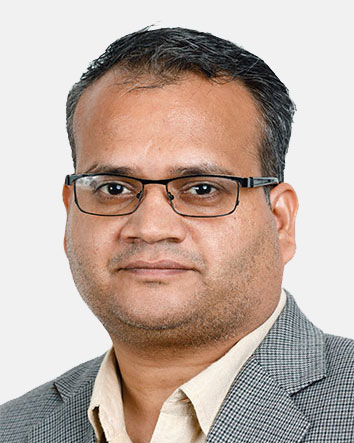
Research Fellow
Institute of South Asian Studies
National University of Singapore
Dr Hafeez Jamali
Additional Secretary
Government of Balochistan
Dr Yousuf Al Bulushi
EPCm Operation Interfaces Head
Petrofac, Oman
Dr Mohsen Solhdoost
Lecturer
University of Queensland
Dr Amit Ranjan is a Research Fellow at the Institute of South Asian Studies, National University of Singapore. His research interests include water disputes, South Asian politics (India, Bangladesh, Maldives and Pakistan), India’s regional policy and India’s internal security. His papers, review essays and book reviews have been widely published in journals, including Asian Survey, Asian Affairs, Economic & Political Weekly, India Review, Indian Journal of Public Administration, India Quarterly, Journal of Migration Affairs, Journal of Indian Ocean Region, Roundtable: The Commonwealth Journal of International Affairs, Social Change, South Asia Research, Journal of Asian Security and International Affairs and World Water Policy.
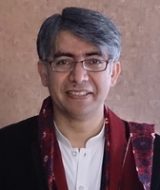
Dr Hafeez Jamali is a scholar and civil servant whose research focuses on the effects of globalisation and development on the livelihoods of marginalized communities. He holds an MPA in Public Administration from the University of Victoria, Canada and a PhD in Social Anthropology from the University of Texas at Austin. He is currently serving as Additional Secretary in the Government of Balochistan and serves as Balochistan’s Focal Person to Federal Government ministries, divisions, and attached departments. He has previously taught as an Assistant Professor in the School of Arts, Sciences and Humanities at Habib University, Pakistan and led the Interdisciplinary Development Research Center (IDRAC) at Habib University.

Dr Mohsen Solhdoost completed his PhD entitled External Support to Non-State Armed Groups and National Role Conceptions, at the University of Queensland, Australia, in 2020. He has been working as a Lecturer and Teaching Assistant at the University of Queensland and the Australian Catholic University, teaching a wide range of international relations courses. He has published peer-reviewed articles and op-eds on Iranian foreign policy, US-Iran relations, state-sponsorship of proxies and geopolitics of the Middle East.
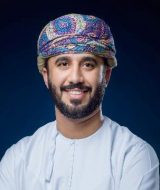
Dr Yousuf Al Bulushi is the Head of EPCm Operation Interfaces at Petrofac, Oman. He worked for the same organisation as a country human resources and administration manager for six years. Furthermore, his teaching and research interests are focused on business administration, logistics, oil and gas, human resources, international and political economy primarily related to the region. He was involved with many national organisations as a lecturer for some finance and economic subjects in higher education. In addition to that, his research focuses on GCC in general and Oman specifically. He’s keen about Omani politics, social and economic development —i.e., Oman’s developmental plans and foreign policy. His most recent research was on how Duqm dock will change the region’s economy as a whole and impact Oman’s political and economic standing among the GCC countries. Dr Bulushi is currently doing his PhD in business administration at Bradford University.

[Chairperson] Dr Ameem Lutfi is a Research Fellow at the Middle East Institute, National University of Singapore. He is a historical anthropologist specialising in transnational mobility and military-labour markets. His current book project entitled Conquest Without Rule: Baloch Portfolio-Mercenaries in the Indian Ocean looks at state-building in the region from perspective of a diasporic group which has maintained strong presence in the military infrastructure of various states in the region since at least the 16th century despite not having a state of their own. Ameem holds a PhD in cultural anthropology from Duke University. Prior to joining MEI, he was a postdoctoral fellow at the Oriental Institute at the Czech Academy of Sciences.

